![]()
![]()
![]()
Use LEFT and RIGHT arrow keys to navigate between flashcards;
Use UP and DOWN arrow keys to flip the card;
H to show hint;
A reads text to speech;
70 Cards in this Set
- Front
- Back
- 3rd side (hint)
|
Service |
A means of delivering value to customers by facilitating outcomes customers want to achieve without the ownership of specific costs and risks. They must add value to the customer, support his or her business objectives and be perceived as a coherent whole |

|
|
|
Service Offerings |
Consists of a set of service commitments which uniquely define the level of service in terms of availability, scope, and pricing. |

|
|
|
Service Management |
• A set of specialized organizational capabilities for enabling value for customers in the form of services |
• The need for service management is relative to the size of the organization • ITIL can be used as a guideline for implementing service management |
|
|
Service Organization |

|
|
|
|
Service Offerings |

|
|
|
|
Service Relationships |
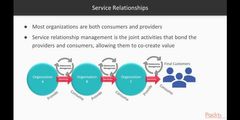
|
|
|
|
Service Provision |

|
|
|
|
Service Consumption |

|
|
|
|
Value |

|
|
|
|
Components of Value |

|

|
|
|
Cost |

|
|
|
|
Output |

|
|
|
|
Outcome |

|
|
|
|
Risk |

|
|
|
|
Risk Management |

|
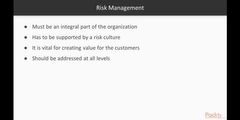
|
|
|
Roles in the Organization |

|

|
|
|
Stakeholders |

|
|
|
|
Guiding Principles |

|

Should ALWAYS Be Applied TOGETHER |
|
|
Customer Experience (CX) |
Defined by interactions between a customer and an organization throughout their business relationship. An interaction can include awareness, discovery, cultivation, advocacy, purchases and service. |

|
|
|
Focus on Value |

|
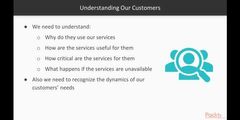
|
|
|
Focus on Value |
Everything the organization does should create value for stakeholders. We mostly think about value for customers and users, but other stakeholders must also be considered, including regulators, society, shareholders, employees etc. After all, a service that creates value for customers while losing money for the service provider and causing employee frustration is not going to be very successful.Value is not just financial. This guiding principle also encourages you to think about customer experience (CX) and user experience (UX). Of course, you can only do this if you first spend a bit of time thinking about who is using your service, and how it creates value for them. |
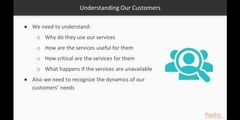
|
|
|
Start Where You Are |
Don’t start from scratch and build something new without considering what you already have. It’s almost always better to improve what you currently have than to throw it all away and start again, although you must also be able to recognise when a complete replacement is, in fact, needed.Not only is this approach less wasteful than starting from scratch – because it preserves value that you already have – but it also helps you to keep your people on board. They’re much more likely to support the changes you need if their previous contributions have been appropriately valued.Don’t rely on metrics and reports to tell you what the current situation is. When you carry out an assessment you should observe what is happening for yourself, and just use the metrics to support your observations. |

|
|
|
Progress Iteratively with Feedback |
Don’t try to do everything at once. Multi-year improvement projects that involve large investment and only deliver value after a very long time rarely deliver the value that was anticipated. It’s much better to organize work into small, manageable sections that can be executed and completed quickly.Seek feedback before, during, and after each iteration and use it to help ensure that your actions are focused and appropriate and remain so, even if circumstances change. |
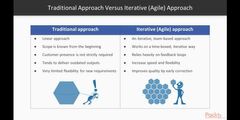
|
|
|
Collaborate and Promote Visibility |
People who work in silos can get very good at specific tasks. But when circumstances change, and those people must adapt to the changes, they’re at a disadvantage. But when you collaborate as a matter of everyday practice, everyone benefits. You create more value for yourself, more value for the people you collaborate with, and more value for your mutual customers and partners. People working together effectively can create much greater value than people working in separate silos.Of course, for collaboration to be effective, you need to be transparent about what’s happening. If everyone knows what’s happening, and how well it’s going, and you share relevant information, then it’s going to be much easier for everyone to collaborate.Collaboration isn’t just for teams within the service provider, you also need to collaborate with customers, users, suppliers, and anyone else who is involved in your services. |

|
|
|
Think and work holistically |
It may be easier to think about your bit of the work in isolation, but this results in poor practice. There’s little point in one part of your organization working faster or more efficiently if this puts a strain on some other part of the organization. You need to think about how the work you do contributes to the overall creation of value. This way you can make decisions that benefit everyone.No service, practice, process, department, or supplier stands alone. They all interact in complex ways to create value. You need to think about the whole thing whenever you’re making a decision or planning an improvement. |
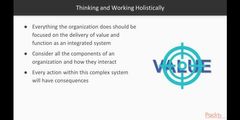
|
|
|
Keep it simple and practical |
Focus on the simple things that create value, rather than on following complex processes just because they have been in use for a long time. Ask why complex steps exist and unless there is a solid, current reason, stop doing them. Use the minimum number of steps that you need and don’t do anything that isn’t creating value for one of your stakeholders.One implication of this principle is that your processes need to cover the basics and shouldn’t be designed to cover every possible situation. Train people to recognise when they need to do something different, and then trust them to do it. If everyone in an organization has a good grasp of the ITIL guiding principles, then they should make the right decisions in most situations. |

|
|
|
Optimize and Automate |
You need to use all of your resources as effectively and efficiently as you can. This means that you should automate wherever you can, and use people only for tasks that can’t be automated. It also means that you need to think carefully about what you can automate and about the circumstances where only a person will do; and about simplifying those processes you do decide to automate to eliminate wasteful or inefficient steps.You should always optimize the work BEFORE you automate it, as automating something that is inefficient or ineffective may just result in you doing the wrong thing faster! |

|
|
|
4 Dimensional Model |

|

|
|
|
Organizations and People |
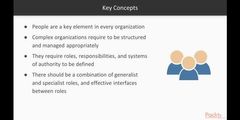
An organization needs a culture that supports its objectives, and the right level of capacity and competency among its workforce. |
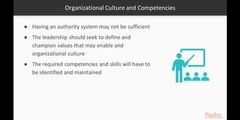
|
|
|
Information and Technology (Key Concepts & Selection) |

In the SVS context, this includes the information and knowledge as well as the technologies required for the management of services. |

|
|
|
Information and Technology (Constraints) |

|
|
|
|
Partners and Suppliers |
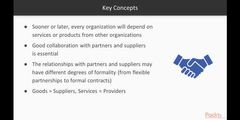
This refers to an organization’s relationships with those other businesses that are involved in the design, deployment, delivery, support, and continual improvement of services. |

|
|
|
Value Streams and Processes |

How the various parts of the organization work in an integrated and coordinated way is important to enable value creation through products and services.
|
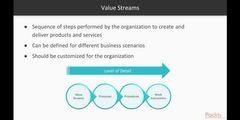
|
|
|
The Service Value System (SVS) |
a key component of ITIL 4, which facilitates value co-creation. It describes how all the components and activities of an organization work together to enable value creation. As the SVS has interfaces with other organizations it forms an ecosystem and can also create value for those organizations, their customers and stakeholders.At the heart of the SVS is the service value chain – a flexible operating model for the creation, delivery and continual improvement of services. The service value chain defines six key activities: plan; improve; engage; design and transition; obtain/build; and deliver and support. They can be combined in many different sequences, which means the service value chain allows an organization to define a number of variants of value streams, e.g. the v3 service lifecycle.The flexibility of the service value chain allows an organization to effectively and efficiently react to changing demands from stakeholders. |
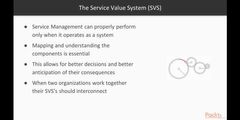
|
|
|
The Components of SVS |

|
|
|
|
The Service Value System (Inputs & Outputs) |

|
|
|
|
Guiding Principles (Definition) |

|
|
|
|
Continual Improvement |
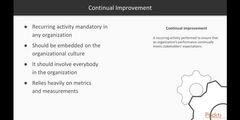
|
|
|
|
ITIL Practices |

|
|
|
|
Governance |

|
|
|
|
Service Value Chain |
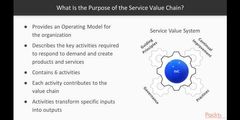
|
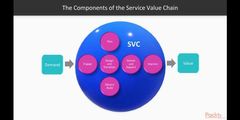
|
|
|
Service Value Chain (Key Points) |

|
|
|
|
Planning |
Planning is the process of thinking about the activities required to achieve a desired goal. It is the first and foremost activity to achieve desired results. |

|
|
|
Designing and Transitioning |

|

|
|
|
Engaging |

|

|
|
|
Obtaining/Building |

|

|
|
|
Delivering and Supporting |

|

|
|
|
Improving |

|

|
|
|
ITIL Practices |

|
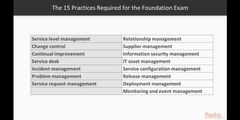
|
|
|
Service Level Management |

|

|
|
|
Service Level Agreement (SLA) |

|
|
|
|
Change Control (Enablement) |

|
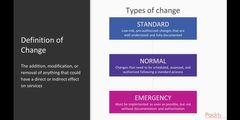
|
|
|
Change Control (Authority) |

|

|
|
|
Continual Improvement |

|
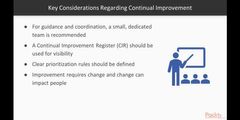
|
|
|
Continual Improvement (Model) |

|

|
|
|
Incident Management |

|

|
|
|
Incident Management (Key Concepts) |

|
|
|
|
Problem Management |
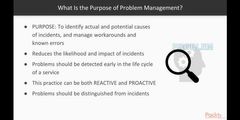
|
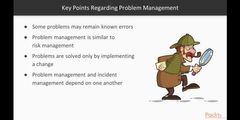
|
|
|
Problem Management (STEPS) |

|

|
|
|
Service Requests Management |

|

|
|
|
Service Desk |

|

|
|
|
Service Desk (Technology) |
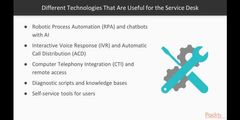
|
|
|
|
Relationship Management |
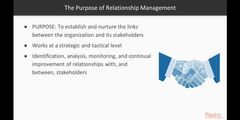
|

|
|
|
Supplier Management |

|

|
|
|
Elements of Security |

|
|
|
|
IT Asset Management |

|

|
|
|
Service Configuration Management |
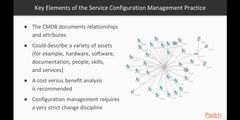
|
|
|
|
Release Management |

|

|
|
|
Deployment Management |

|

|
|
|
Monetary and Event Management |
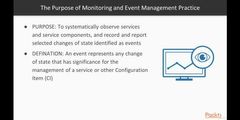
|

|

